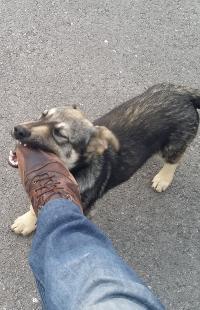Search Results (Searched for: )
- Cant do this anymore bye all

09 Jan 2025 02:06
Replied by Cant do this anymore bye all on topic A propsed aid to retrieving information when try to provide answers.
A propsed aid to retrieving information when try to provide answers.
Category: Off Topic and Test Posts
- tommylight

09 Jan 2025 01:58
Replied by tommylight on topic Fast Hole EDM from Hacked Parts
Fast Hole EDM from Hacked Parts
Category: General LinuxCNC Questions
- Cant do this anymore bye all

09 Jan 2025 01:48
Replied by Cant do this anymore bye all on topic New PC build: Asrock N100DC
New PC build: Asrock N100DC
Category: Computers and Hardware
- fully_defined

09 Jan 2025 01:41
Replied by fully_defined on topic pncconf Clearpath SDSK settings
pncconf Clearpath SDSK settings
Category: General LinuxCNC Questions
- Cant do this anymore bye all

09 Jan 2025 01:39
Replied by Cant do this anymore bye all on topic LinuxCNC on Raspberry Pi 5
LinuxCNC on Raspberry Pi 5
Category: Installing LinuxCNC
- Cant do this anymore bye all

09 Jan 2025 01:33
Replied by Cant do this anymore bye all on topic Real-time kerel not detected on patched 6.12
Real-time kerel not detected on patched 6.12
Category: General LinuxCNC Questions
- slowpoke
- slowpoke
09 Jan 2025 01:13
- jst
- jst
09 Jan 2025 01:04
Replied by jst on topic Installing ethercat repositories
Installing ethercat repositories
Category: EtherCAT
- IronManDylan
- IronManDylan
09 Jan 2025 00:19
Replied by IronManDylan on topic Fast Hole EDM from Hacked Parts
Fast Hole EDM from Hacked Parts
Category: General LinuxCNC Questions
- smc.collins
- smc.collins
08 Jan 2025 23:44 - 08 Jan 2025 23:45
Replied by smc.collins on topic M6 Remap Lathe (Remap T & ignore M6)
M6 Remap Lathe (Remap T & ignore M6)
Category: General LinuxCNC Questions
- tommylight

08 Jan 2025 23:30
Replied by tommylight on topic Fast Hole EDM from Hacked Parts
Fast Hole EDM from Hacked Parts
Category: General LinuxCNC Questions
- tommylight

08 Jan 2025 23:23
Replied by tommylight on topic 7i96s Arc Voltage + Encoder Fault
7i96s Arc Voltage + Encoder Fault
Category: Plasma & Laser
- IronManDylan
- IronManDylan
08 Jan 2025 22:48
Replied by IronManDylan on topic Fast Hole EDM from Hacked Parts
Fast Hole EDM from Hacked Parts
Category: General LinuxCNC Questions
- Tntmold
- Tntmold
08 Jan 2025 22:24 - 08 Jan 2025 22:31
Replied by Tntmold on topic Installing ethercat repositories
Installing ethercat repositories
Category: EtherCAT
- JT

08 Jan 2025 22:24
Time to create page: 0.361 seconds
